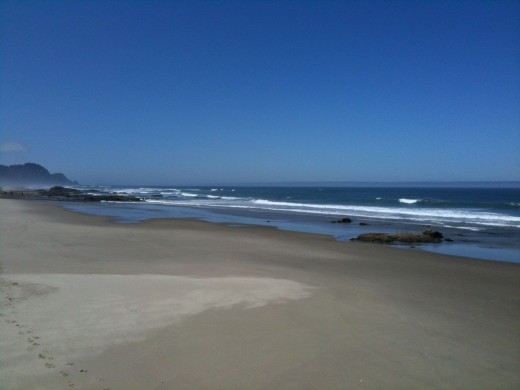
This question is the major focus of a new report recently released by the US Geological Survey. Beach erosion is a chronic problem along most open ocean shores of the United States. As coastal populations continue to increase and infrastructure is threatened by erosion, there is increased demand for accurate information regarding past and present trends and rates of shoreline movement. There is also a need for a comprehensive analysis of shoreline movement that is consistent from one coastal region to another.
This report provides some very detailed analysis in comparing the PNW coastline between past and present. It also has some really cool discussion of the individual littoral cells so you can learn more about factors affecting your specific stretch of coastline. Check out the full report here.
Of interest in the discussion:
"There are distinct differences between southern Oregon, the northern Oregon coast, and along the coast of Washington in terms of the degrees and magnitudes of erosion versus progradation. Although the Columbia River certainly delivered sediments to other PNW beaches when sea level was lower than it is today, it is evident from beach sand compositions that, at present, the Columbia River only provides sediment to the CRLC. Other PNW beaches, particularly those within the many individual littoral cells that make up the rest of the Oregon coast and Washington’s Olympic Peninsula, have relatively limited sand sources. In the long term, only three of Oregon’s 17 non-CRLC littoral cells had statistically significant trends of erosion. However, in the short term, 10 of these littoral cells were eroding.
An increase in the erosion hazard along much of Oregon may be related to the effects of sea-level rise and increasing storm wave heights (Ruggiero, 2013). Of importance, particularly in the short term, is the alongshore variability in land uplift rates due to tectonics, which result in alongshore varying rates and directions of relative sea-level rise; this variability in uplift appears to at least partially control the regional variability in short-term shoreline change rates. Other climate related processes, such as the occurrence of major El Niños, also effect the shoreline changes in the region. Major El Niños elevate monthly mean sea levels by tens of centimeters throughout the winter and produce a shift in the storm tracks that results in alongshore redistributions in sand volumes on the beaches and hotspot erosion. There are limited modern-day sources of sand to many Oregon beaches, with much of the sand being relict. Many beaches today are deficient in sand volumes and therefore do not provide sufficient buffer protection to backshore properties during winter storms."

